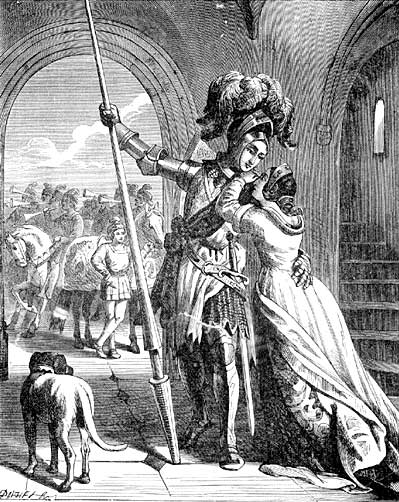Overview of the High Middle ages

The High Middle Ages were a time of tremendous growth in Europe. The foundations of Europe as it is known today were set. The major nation-states that were to dominate in Western Europe for the rest of the millennium -- England, France Germany and Russia -- were founded during the High Middle Ages.
It was a period of growth for the cities, as well. London, Paris Cologne and other important cities were either established or experienced significant growth during this period.
This era was also one of economic revival. The revival, partially the result of improved climatic conditions, led to higher standards of living and a vastly increased population. The majority of agricultural products were grown on enormous manorial estates farmed by serfs.
During this period, trade between cities in Europe and beyond was rekindled. This helped rejuvenate Europe's cities and create a new class of merchants and craftsmen. The cities that were situated along trade routes, either on rivers or on the coasts, experienced exceptional growth.
The leaders of European society during this period were the men who engaged in warfare. Whether defending national territory against invaders or participating in the Crusades, the aristocracy was intimately involved in warfare.
England was invaded by William the Conqueror. The development of new English political institutions included the issuance of the Magna Carta . By the end of the period, the English and French were engaged in a 100-year war.
In France, the High Middle Ages was marked by the slow emergence of a central monarchy. Germany, on the other hand, did not develop a strong central government.
No discussion of the political developments of the period would be complete without discussing the Crusades. The Crusades, which began in response to a call by the Byzantine Emperor for help against the Seljuk Turks, soon became a holy war against the 'infidels' or unbelievers. Along the way to the Holy Land, latent anti-semitism came to the fore and thousands of Jews were killed. When the Crusaders finally reached the Holy Land and conquered Jerusalem, they slaughtered thousands more non believers (Jews and Muslims). Ultimately, the Crusaders were able to hold Jerusalem for less then 50 years.
During this period, the Church reached the acme of its power. The Pope was supreme and religion was popular with the masses.
The most important architectural works during this period were churches. Large Romanesque structures, was well as Gothic churches like Notre Dame, were built.
It was also the time of Black Death. The plague which struck Europe in the fourteenth century caused the deaths of an estimated nearly 1/3 of the population.

